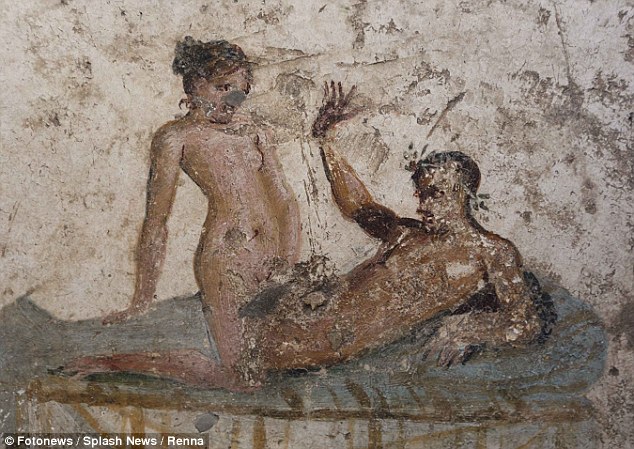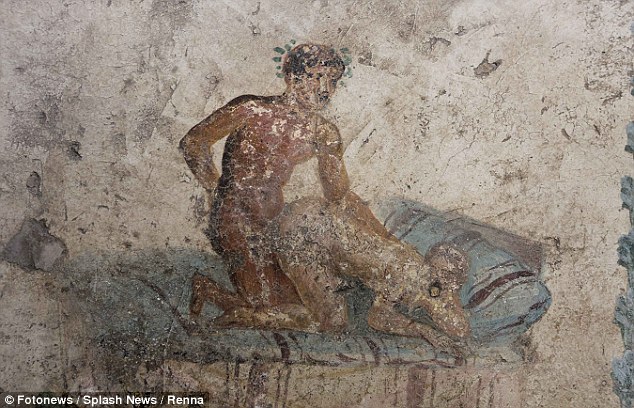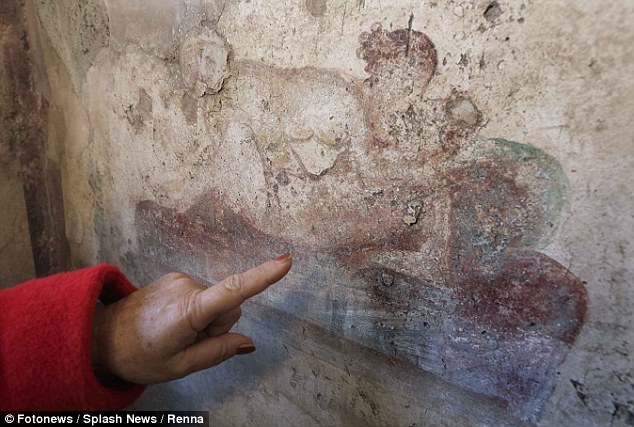'It's very small, dank and the rooms are rather dark and uncomfortable,' she told CBC.
'Married men could sleep with anyone as long as they kept their hands off other men's wives,' she said.
'Married women were not supposed to have sex with anyone else.'
The building is located in Pompeii's oldest district.
The two side streets that line the brothel were once dotted with taverns and inns.
Upon entering the building, visitors are met by striking murals of erotic scenes painted on the walls and ceilings.
In each of the paintings, couples engage in different sexual acts.
According to historians, the paintings weren't merely for decoration - they were catalogues detailing the speciality of the prostitute in each room.
Two thousand years ago, before the devastating volcanic eruption, prostitution was legal in the Roman city.
Slaves of both sexes, many imported from Greece and other countries under Roman rule, were the primary workforce.
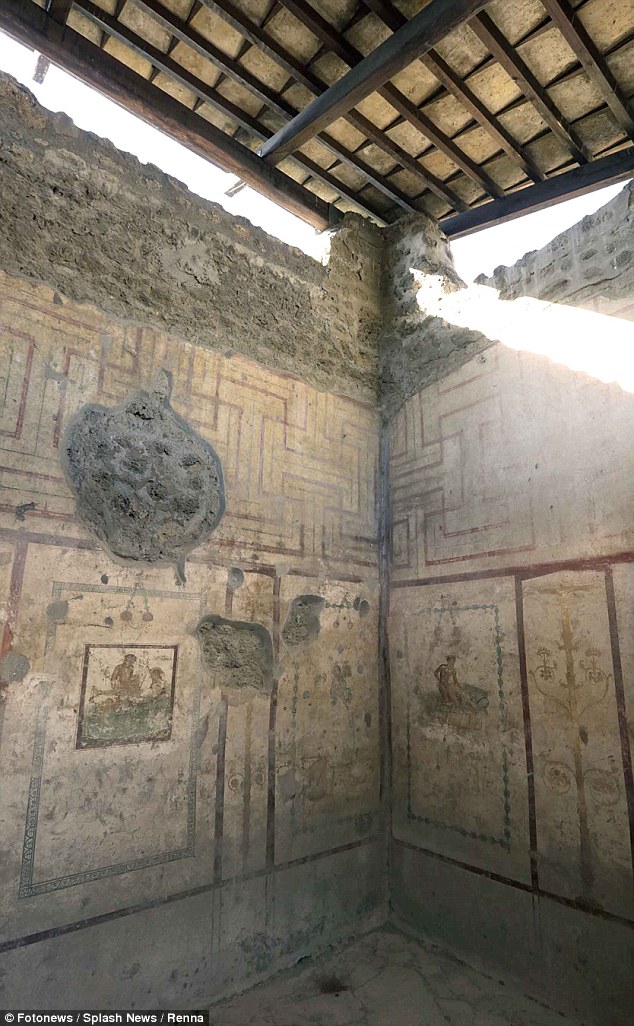
Researchers believe the erotic paintings depicting group sex and other naughty acts may have indicated the services offered by prostitutes
The Unesco World Heritage Site is of special importance because, unlike other Pompeii brothels at the time, the Lupanar of Pompeii was built exclusively for prostitution appointments, serving no alternative function.
Its walls remain scarred by inscriptions left by past customers and working girls.
Researchers have managed to identify 120 carved phrases, including the names of customers and employees who died almost two thousand of years ago.
Many of these inscriptions include similar phrases to those one would find in a modern day bathroom, including men boasting of their sexual prowess.
On the top floor of the building sit five rooms, each with a balcony from which the working girls would call to potential customers on the street.
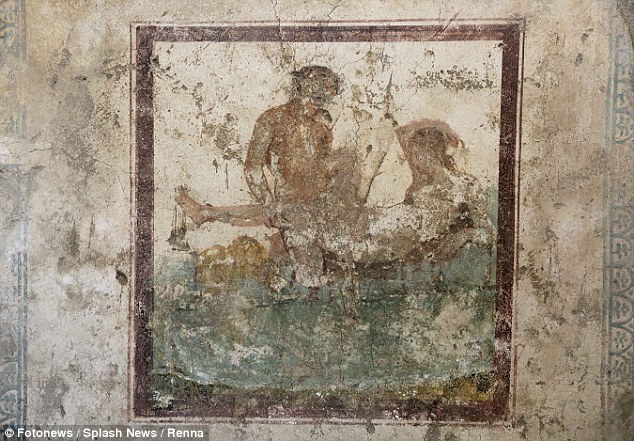
2,000 years ago, before the devastating volcanic eruption, prostitution was legal in the Roman city. Slaves of both sexes, many imported from Greece and other countries under Roman rule, were the primary workforce
Much like in ancient Rome, researchers speculate that Pompeii prostitutes were required to legally register for a licence, pay taxes, and follow separate rules to regular Pompeii women.
For example: When out on the street, Pompeii's working girls wore strict attire - they wore a reddish brown coat at all times, and dyed their hair blonde.
Prostitutes were separated into different classes depending on where they worked and the customers they served.
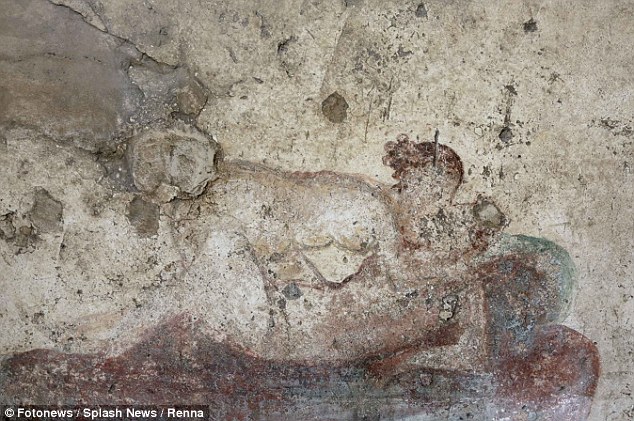
The Unesco World Heritage Site is of special importance because, unlike other Pompeii brothels, the Lupanar of Pompeii was built exclusively for prostitution appointments, and served no alternative function
Though the historic sex site has been 'closed for business' for some time, that hasn't stopped some raunchy holiday makers attempting to re-christen the building.
In 2014, three French holidaymakers were arrested for trespassing after breaking into the brothel ruins for a late night sex romp.
A Frenchman and two Italian women, all aged 23 to 27, allegedly broke into the Suburban Baths to fulfil their fantasies inside a former brothel that is still decorated with centuries-old wall paintings depicting explicit sex scenes.
But authorities brought the group's middle-of-the-night threesome to a premature end.

In 2014, three French holidaymakers were arrested for trespassing after breaking into the brothel ruins for a late night sex romp
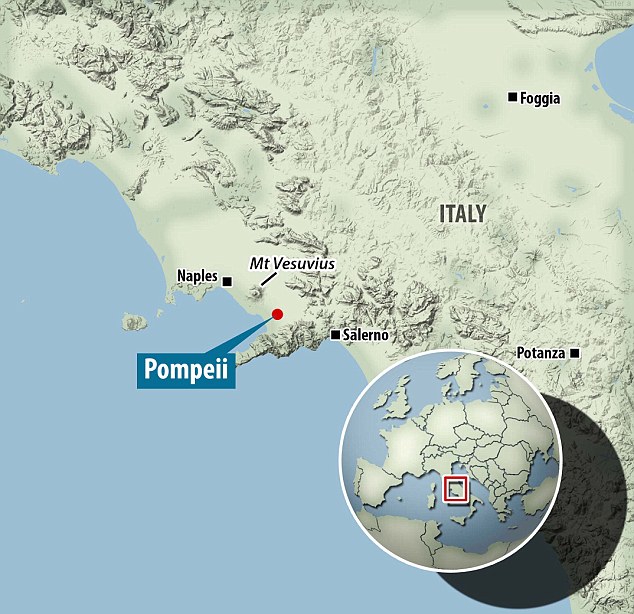
Pompeii was an ancient Roman city located near modern Naples, in the Campania region of Italy

